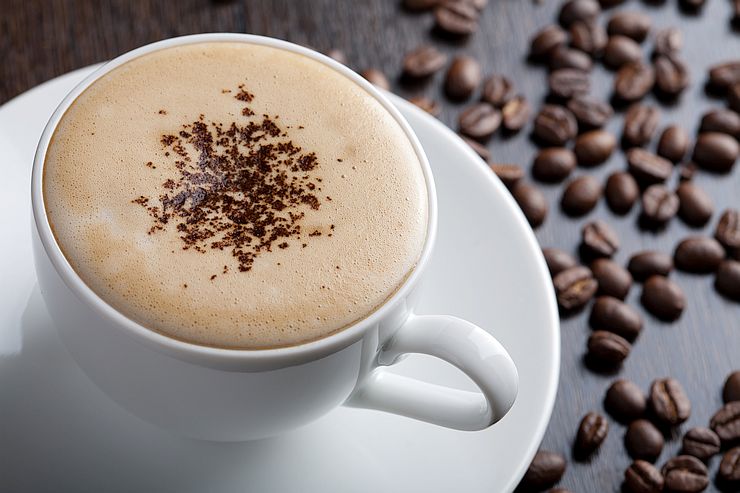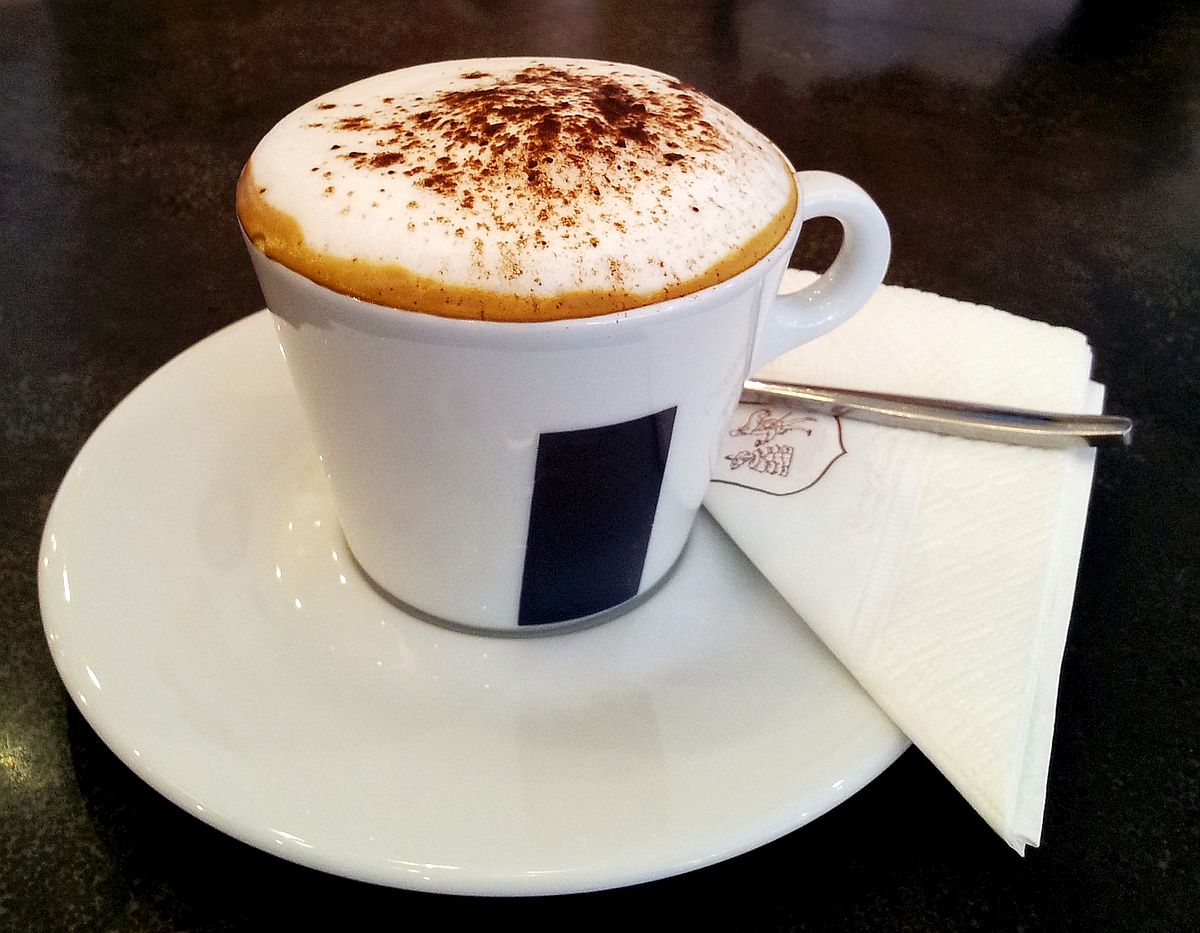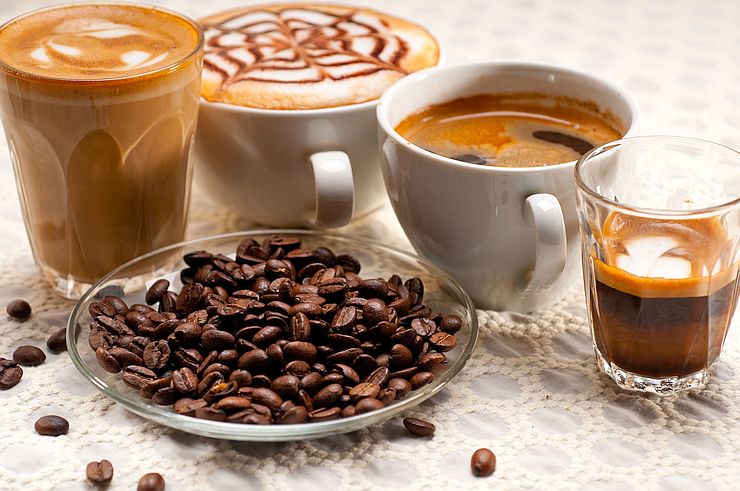Cappuccino is an espresso-based coffee drink that has its roots in Italy. The word cappuccino means “little hood” and refers to the brown color of monastic robes worn by members of the Capuchin order. It is traditionally made with espresso, hot milk, and steamed milk, and foamed milk. This article will explore what makes a cappuccino what it is, what ingredients are used in making one, what kind of milk should be used for steaming (and other variants).

Espresso-based coffee drinks that have their roots in Italy include cappuccino, latte and macchiato. The word “cappuccino” means “little hood”, referring to the brown color of monastic robes worn by members of the Capuchin order (from which it takes its name) or any other order wearing the same color. The drink is traditionally made with espresso, hot milk, and steamed milk, and foamed milk on top.
Italians consider cappuccino the perfect balance of espresso, steamed milk and foamed milk. They even have standards for espresso and cappuccino, and an institution that promotes and regulates traditional cappuccino and espresso: Istituto Nazionale Espresso Italiano.
- What Is A Cappuccino?
- What Goes Into A Cappuccino?
- How to Make a cappuccino
- What Is The Best Coffee For Cappuccino?
- Milk Steaming and Frothing
- How to steam Milk?
- Cappuccino Vs Latte- what is the difference?
- Other Espresso Drinks like Cappuccino – What Else Can You Make with Espresso Coffee?
- Cappuccino Art – Is It As Great Looking as Latte Art?
What Is A Cappuccino?
A cappuccino is an espresso-based coffee drink that consists of a shot of espresso combined with steamed milk and frothed milk. The resulting beverage has a layer of foam on the top and is usually served in a cappuccino cup.
What Goes Into A Cappuccino?
A typical cappuccino contains espresso, hot milk, and steamed milk which are combined to make a rich and creamy drink. Foam is often used as a topping and can be made from foamed milk, cream, or even soy milk.
How to Make a cappuccino
The easiest way to make a cappuccino is with an espresso machine. You pull one or two espresso shots with the espresso machine, then you steam the milk, and you make sure you introduce a bit more air in the milk so you obtain a layer of frothed milk as well. Before you buy an espresso machine make sure to take a look at our article “How to Buy an Espresso Machine for Home Guide“.
You can also use a stovetop espresso maker or even an Aeropress.
What Is The Best Coffee For Cappuccino?
When it comes to making a great cappuccino, the coffee you use is important. There is not too much milk in the drink, so any coffee imperfections will be apparent in the final drink.
A well made espresso will not have too much bitterness, and will have foamy brown layer on top. Read our tips on making an espresso by taking a look at our How to Make Espresso With an Espresso Machine. This top layer is called crema, and it is the sign of a well prepared espresso. Crema in itself it's not too important in a cappuccino, because the milk will drench it, but it gives us an idea if the final beverage will be a good one or not.
Espresso Alternatives for Cappuccino
If you don't have an espresso machine, you can use espresso alternatives. These include an AeroPress or a stovetop espresso maker, (Moka pot). The Moka pot is traditionally used in Italy to make cappuccino at home, but it is not what you would call a “true” espresso. If using an AeroPress or stovetop Espresso maker, keep in mind that these are single shot devices so they will produce only one serving at the time.
Milk Steaming and Frothing

When steaming milk for cappuccino you want the milk to be warm, but not boiling hot. This is why starting with a cold milk is best, because you have more time to inject enough air in the milk. If you steam under pressure for too long, you'll end up with too much froth on top and barely any liquid steamed milk. The other problem is the milk gets scalded if you heat it too much, and it loses all of its natural sweetness.
What If You Don't Have an Espresso Machine?
If you don't have an espresso machine, or your machine is a capsule based espresso machine, such as Nespresso, or iperEspresso, without a steam wand, you can use a handheld frother. You will have to steam your milk in the microwave, and froth it with a handheld frother. This is a perfect pair for either the AeroPress or the Moka pot options.
What Is The Best Milk For Steaming?
The best milk to use for steaming is whole milk. You can also choose low-fat or non-fat if you are health conscious, but the final result will not be as rich and creamy.
How to steam Milk?
Warm your steaming pitcher with some hot water, and dry it. At this moment you can also warm up the cup you are going to use for cappuccino by rinsing it in very hot water.
Put a bit of cold milk from fridge into your steaming pitcher (less than what would be required for one serving).
Insert the steam wand into the milk just below the surface and turn it on. The milk will start to froth and rise in the pitcher. As the air gets injected into the milk, the top milk layer will get more airy, and the sound of the pressured air in the pitcher will start to change. This is the sign you need to advance the steam wand deeper into the milk, to inject air into the next layer. When the sound changes, advance a bit more every time, until you reach the bottom of the milk frothing jug.
Once the milk has doubled in size, or reached the top of your steaming pitcher, stop steaming. If you over-fill your steaming pitcher with foam, use a spoon to remove some of the foam and place it into your cup.
Using a spoon, hold back some of the foam on top of the milk in your pitcher, and pour the steamed milk over the perfectly brewed espresso shots. If you do not have enough foam left on top of your milk, that's fine. The milk will not be as creamy and frothy, but the final result is still delicious.
Cappuccino Vs Latte- what is the difference?
Although they are similar in some ways, there are also some important differences between a cappuccino and latte. To make both drinks you would need milk that has been steamed or foamed. However, cappuccino uses less steamed milk which results in a stronger coffee wit a more pronounced coffee flavor.
On the other hand, lattes are larger drinks, and more diluted. They typically don't have the frothed milk layer on top, and the latte art is made with microfoamed milk which works great.
The main difference between cappuccino and latte is ratio between coffee, steamed milk and frothed milk.
Cappuccinos have a lot more foam than lattes. The foam on top of a cappuccino is usually about an inch thick, while the foam on a latte is only about .25 inches thick, or most often, it's completely missing.
The ratio of coffee to milk for cappuccino and latte are the following:
- latte: 1/3 espresso, 2/3 steamed milk
- cappuccino: 1/3 espresso, 1/3 steamed milk, 1/3 foamed milk.

Cappuccino
Equipment
- 1 tamper
- 1 kitchen scale
- 1 espresso leveler/distribution tool optional
Ingredients
- 7 grams medium-dark roast coffee beans up to 9 grams depending on the filter basket
- 1.5 oz. filtered, or spring water
- 1/4 cup 1/4 cup cold milk whole, or 2% are the best, but nonfat works too
Instructions
Brew Espresso
- Turn on the espresso machine to heat it up
- Finely grind 7-9 grams of coffee beans to an espresso grind size.
- Place the coffee grounds in the filter-basket.
- Slightly knock the portafilter on the counter to pack and level them. If you have an espresso leveler, use it to perfectly level your coffee puck.
- Tamp the coffee grounds with a considerable amount of pressure. When you are done tamping, there should be about 3-4 mm from the basket's edge to the coffee puck.
- Lock the portafilter in the espresso machine.
- Place a cappuccino cup on the designated spot on the espresso machine tray and and switch the brew button ON.
- Pull your shot for about 20 to 25 seconds.
- You should get about 1 fluid ounces of espresso. If you get considerably more than 1 oz. grind your coffee finer. If you get too little coffee, grind your coffee slightly coarser. Put the espresso aside.
Steam the Milk
- Switch your espresso machine from espresso brewing to milk steaming and let the boiler warm up and reach the needed temperature.
- Pour the milk into a stainless steel pitcher. The milk should be cold as this gives you more time to froth without scalding the milk.
- When the machine is ready for steaming, submerge the steaming wand just below the milk surface and start the the steam.
- Tilt the pitcher at an angle, so that the milk swirls, moving around in the frothing jug.
- As the milk froths and stretches, the foamy part raises up. Lower the milk pitcher when you see milk froth forming, to stay closer to the surface. This creates more foam. When the milk reaches between 155°F and 165°F, your frothing is done.
- Turn off the steam while still holding the steaming wand dipped into the milk.
Combine The Drinks into a Cappuccino
- Using a spoon, hold back the foam and pour a fluid ounce of the steamed milk over the espresso.
- Spoon the foam on top of the milk, making sure the volume is about 1/3 of the entire espresso drink.
- Decorate with chocolate shavings, cocoa powder, cinnamon or chocolate syrup, and serve hot. For cappuccino art, you can use stencils.
Video
Notes
Nutrition
Other Espresso Drinks like Cappuccino – What Else Can You Make with Espresso Coffee?

There are many other beverages that use coffee as an ingredient. If you're looking for something a little different, why not try one of these variants?
- Flat White: A flat white is made with espresso and steamed milk (less frothed than a cappuccino).
- Mocha: A mocha is a coffee drink that contains chocolate, espresso, and milk.
- Americano: An americano is made with espresso and diluted with hot water.
- Cafe Breve: This espresso drink uses half steamed milk and half cream to make a rich, creamy beverage. BulletProof lovers here?
- Latte: A latte is a more diluted version of the cappuccino, without the layer of frothed milk on top.
- Latte Macchiato: A latte macchiato is a regular latte that has a top layer of frothed milk. Think about it as a diluted cappuccino.
- Affogato: An affogato combines ice cream with one or two shots of hot espresso. I am not sure if this qualifies as an espresso drink, or as a caffeinated ice-cream.
Cappuccino Art – Is It As Great Looking as Latte Art?

Cappuccinos are not as simple to decorate as lattes. With enough practice, the barista will only spend a few extra seconds to create a beautiful latte design.
On the other hand, cappuccinos contain frothed milk, which isn't good for pouring latte art because is not fluid enough. Baristas, however, got creative and found alternate ways to make your beverage pretty.
Cappuccino art is mostly made with stencils. The art is made with a powder such as cinnamon, or cocoa powder that is passed through a stencil to create a drawing on the milk foam. So the cappuccino art is etched, rather than poured.
Another way to create beautiful and tasty designs is with thick syrup, or melted chocolate. The chocolate will stay on top of the froth layer, creating beautiful and precise designs.
As a final word, cappuccino is a delicious espresso-based drink that can be enjoyed in the morning or afternoon. (The Italians have their own idea about cappuccino, and they only drink it in the morning.) With its creamy foam and rich coffee flavor, it's no wonder this beverage has become so popular! Thanks for reading!